In NCERT Solution For Class 10, Maths, Chapter 11, Constructions, Exercise 11.2, we shall discuss questions related construction of Tangents to a Circle. Solutions of chapter 11, Exercise 11.2 is well explained which are given below.
Table of Contents
Toggle
Class 10, Maths, Chapter 11, Exercise 11.2, Solutions
Q.1. Draw a circle of radius 6 cm. From a point 10 cm away from its centre, construct the pair of tangents to the circle and measure their lengths.
Ans:
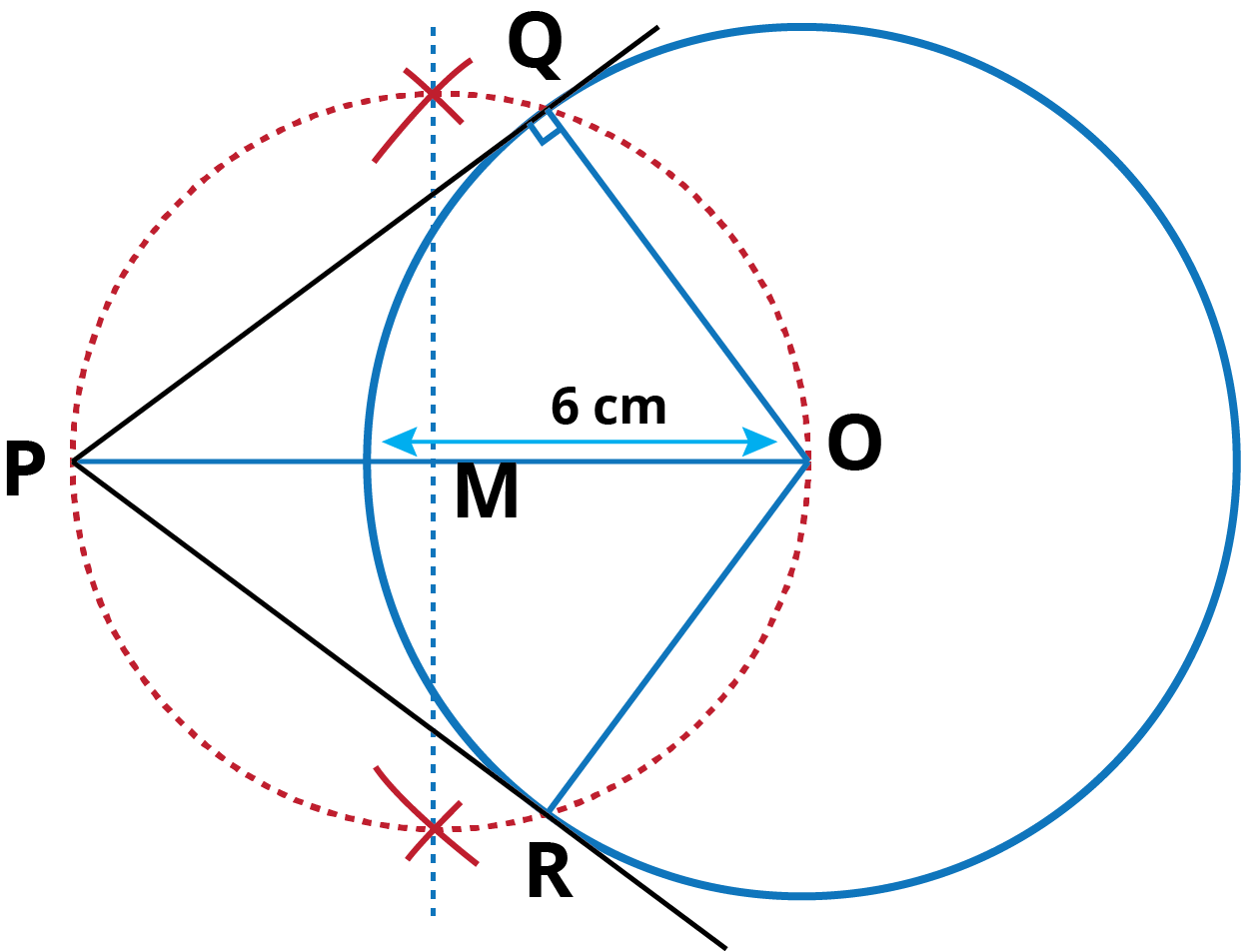
Step of Construction:
- Take a point O and draw a circle of radius 6 cm.
- Locate a point P at a distance of 10 cm from the centre O. (OP = 10 cm)
- Join OP and bisect it. Let M be its mid-point.
- With M as centre and OM as radius, draw a circle to intersect the circle at Q and R.
- Join PQ and PR, Then, PQ and PR are the required tangents.
On measurement, we find length of tangent 8 cm (PQ = PR = 8 cm).
Justification: To prove: PQ and PR are tangents.
On joining OQ, we find that
∠PQO = 90° [Angle in the semi-circle]
∴ PQ ⊥ OQ.
Since OQ is the radius of the given circle, so PQ must be a tangent to the circle. Similarly, PR is also a tangent to the circle.
Q.2. Construct a tangent to a circle of radius 4 cm from a point on the concentric circle of radius 6 cm and measure its length. Also verify the measurement by actual calculation.
Ans: Steps of Construction:
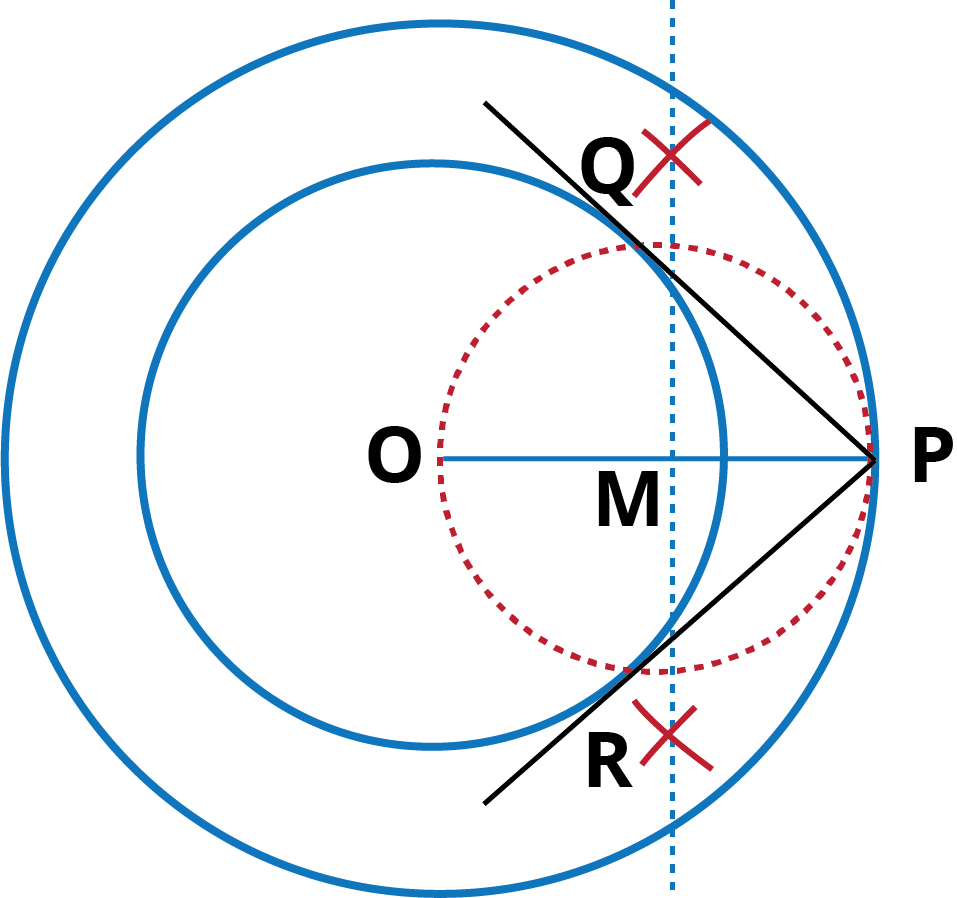
- Take a point O and draw two concentric circles of radii 4 cm and 6 cm respectively.
- Locate a point P on the circumference of the bigger circle.
- Join OP and bisect it. then M is the mid-point.
- With M as centre and OM as radius, draw a circle to intersect the circle at Q and R.
- Join PQ and PR where circle intersect.
- PQ and PR are the required tangents.
On measuring, we find that PQ = PR = 4.8 cm (approx.)
Justification: To prove: PQ and PR are tangents.
On joining OQ, we find that
∠PQO = 90° [Angle in the semi-circle]
∴ PQ ⊥ OQ.
Since OQ is the radius of the given circle, so PQ has to be a tangent to the circle. Similarly, PR is also a tangent to the circle.
Measurement:
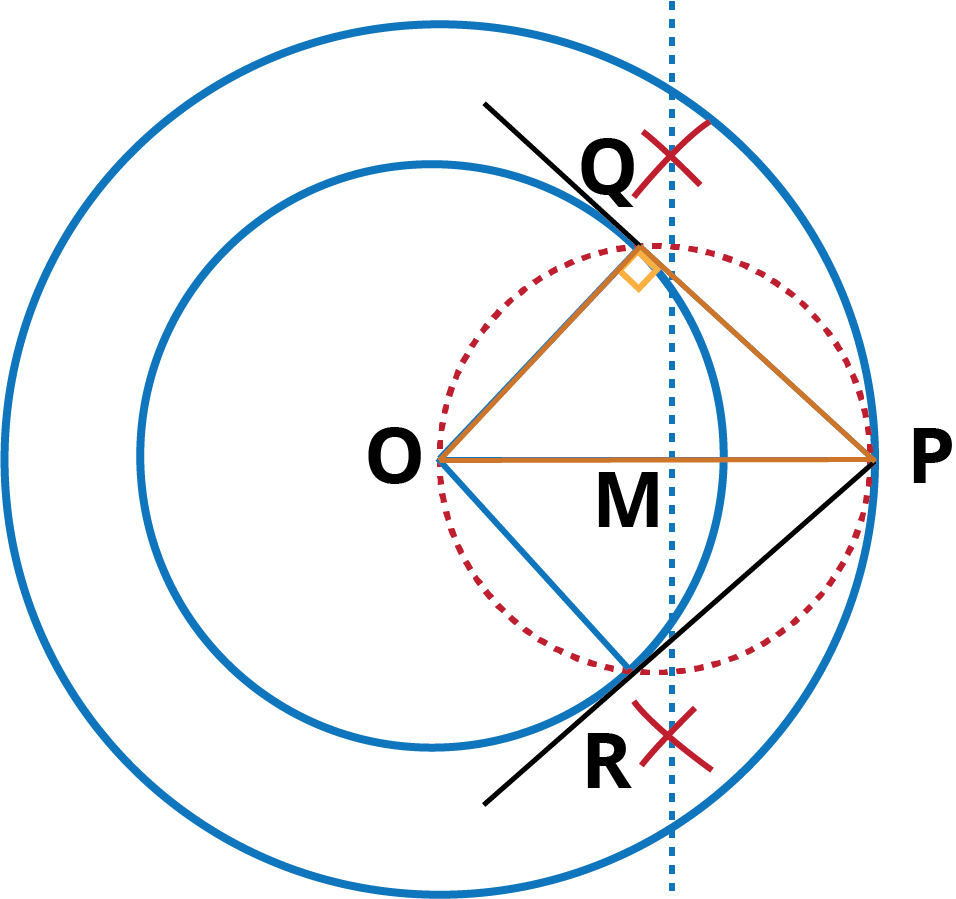
In ΔPQO, we have, OP = 6 cm and OQ = 4 cm
By using Pythagoras theorem,
⟹ (6)2 = (4)2 + PQ2
⟹ 36 = 16 + PQ2
⟹ PQ2 = 36 – 16 = 20
⟹ PQ = $\sqrt{20}$ = 4.47 cm
Hence, length of tangent is 4.47 cm.
Q.3. Draw a circle of radius 3 cm. Take two points P and Q on one of its extended diameter each at a distance of 7 cm from its centre. Draw tangents to the circle from these two points P and Q.
Ans:

Steps of Construction:
- Take a point O, draw a circle of radium 3 cm with this point as centre.
- Take two points P and P’ on one of its extended diameter such that OP = OP’ = 7 cm.
- Bisect OP and OP’. Let their respective mid-points be M and N.
- With M as centre and OM as radius draw a circle to intersect the circle at Q and R and with N as centre and ON as radius draw a circle to intersect the circle at T and U.
- Join PQ and PR.
- Join P’T and P’U. now we have our required tangents.
Justification:
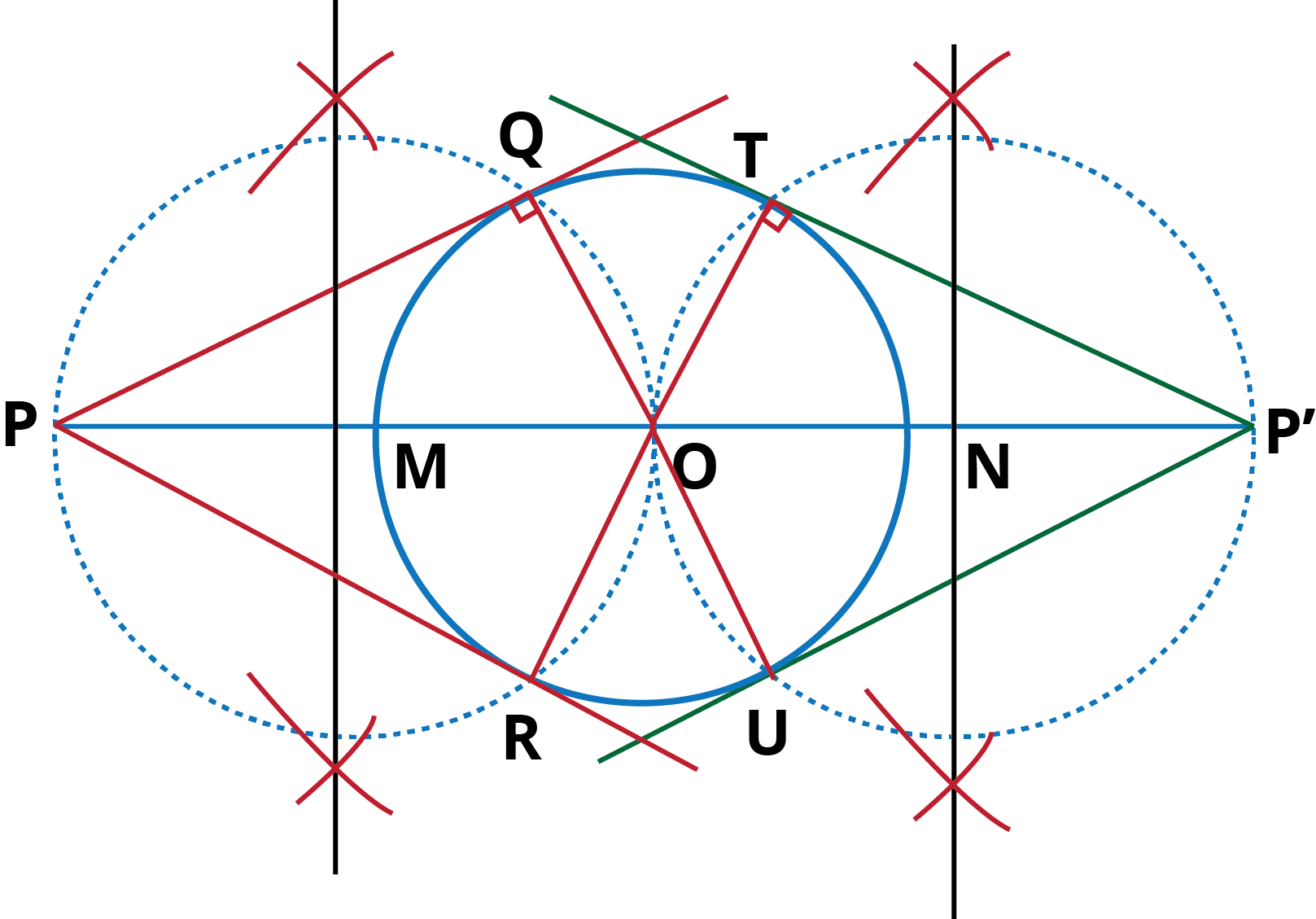
To prove: PQ, PR, P’T and P’U are tangents.
∠PQO = 90° [Angle in the semi-circle]
∴ PQ ⊥ OQ.
Since OQ is the radius of the given circle, so PQ must be a tangent to the circle. Similarly, PR, P’T and P’U are also a tangent to the circle.
Q.4. Draw a pair of tangents to a circle of radius 5 cm which are inclined to each other at an angle of 60°.
Ans: Steps of Construction:

(1.) With O as centre, draw a circle of radius 5 cm.
(2.) by taking point B on circumference of circle and join OB.
(3.) Draw a radius OB and make angle 1200 (1800 – 600).
(4.) Draw any diameter AOC.
(5.) At A, draw AP ⊥ OA.
(6.) At B, draw BP ⊥ OB.
(7.) These two perpendiculars intersect each other at P.
Then, AP and BP are the required tangents.
Justification:
To prove: ∠APB = 600
Since OA is the radius, so PA has to be a tangent to the circle.
Similarly, PB is the tangent to the circle
∵ sum of angles of quadrilateral = 3600
⟹ ∠OAP + ∠APB + ∠PBO + ∠BOA = 3600
⟹ 90° + ∠APB + 90° + 180° = 3600
⟹ ∠APB = 3600 – 90° – 90° – 180°
⟹ ∠APB = 3600 – 300°
⟹ ∠APB = 600 (Hence proved)
Thus, tangents PA and PB are inclined to each other at an angle of 600.
Q.5. Draw a line segment AB of length 8 cm. Taking A as centre, draw a circle of radius 4 cm and taking B as centre, draw another circle of radius 3 cm. Construct tangents to each circle from the centre of the other circle.
Ans: Step of Construction:

(1.) Draw a line AB of 8 cm (AB = 8 cm).
(2.) Taking A as centre, draw a circle of radius 4 cm and taking B as centre, draw a circle of radius 3 cm.
(3.) Bisect the line AB at point O.
(4.) Clearly, O is the centre of AB. With O as centre, draw a circle of radius OA or OB, intersecting circle with centre B at T1 and T2, circle with centre A at T3 and T4.
(5.) Join AT1, AT2, BT3 and BT4. Then, these are the required tangents.
Justification:
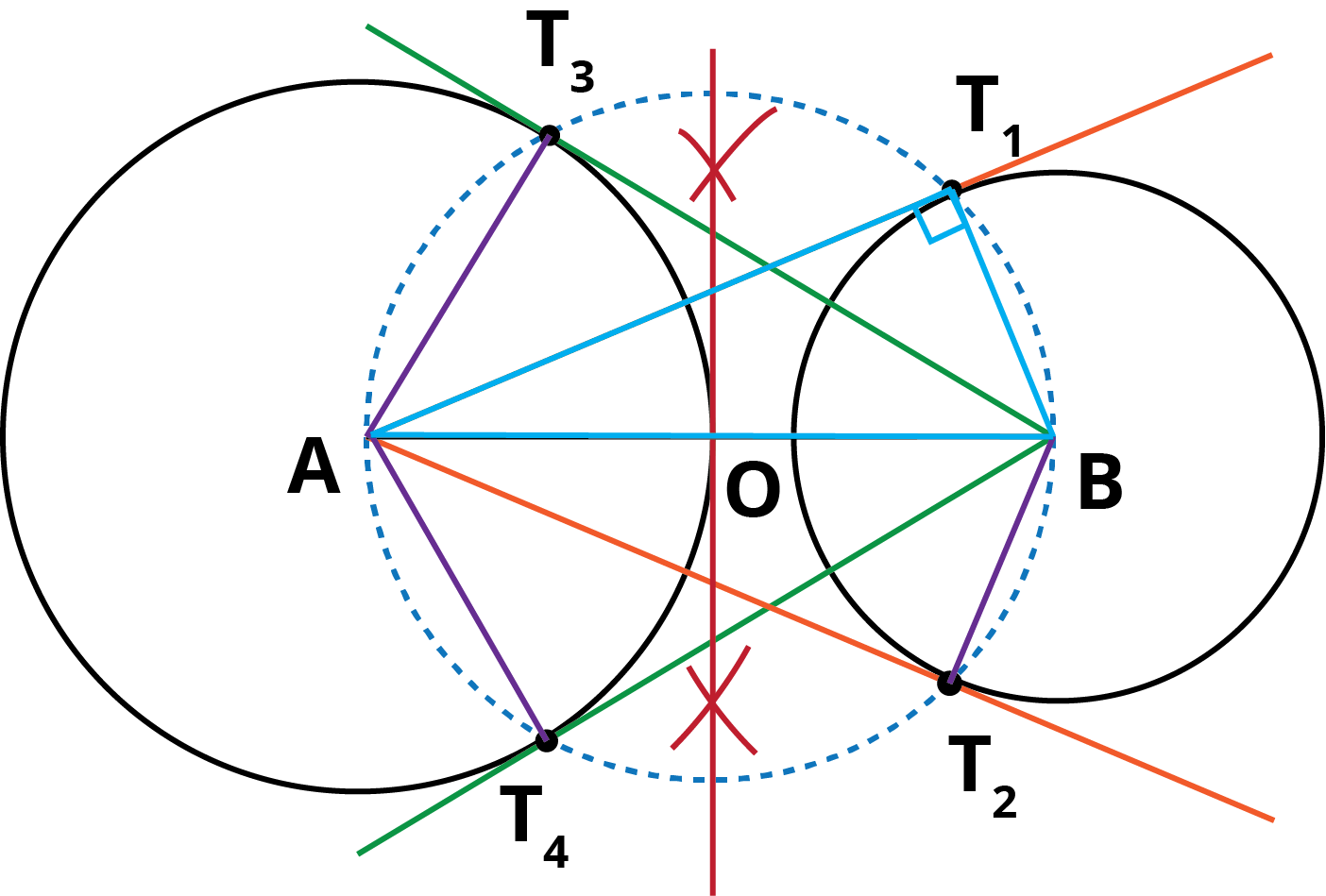
To prove: AT1, AT2 , BT3, BT4 are tangents.
On joining BT1, we find that,
∠BT1A = 90°, [Angle in the semi-circle]
∴ AT1 ⊥ BT1
Since BT1 is the radius of the given circle, so AT1 must be a tangent to the circle.
Similarly, AT2, BT3 and BT4 are the tangents.
Q.6. Let ABC be a right triangle in which AB = 6 cm, BC = 8 cm and ∠ B = 90°. BD is the perpendicular from B on AC. The circle through B, C, D is drawn. Construct the tangents from A to this circle.
Ans:
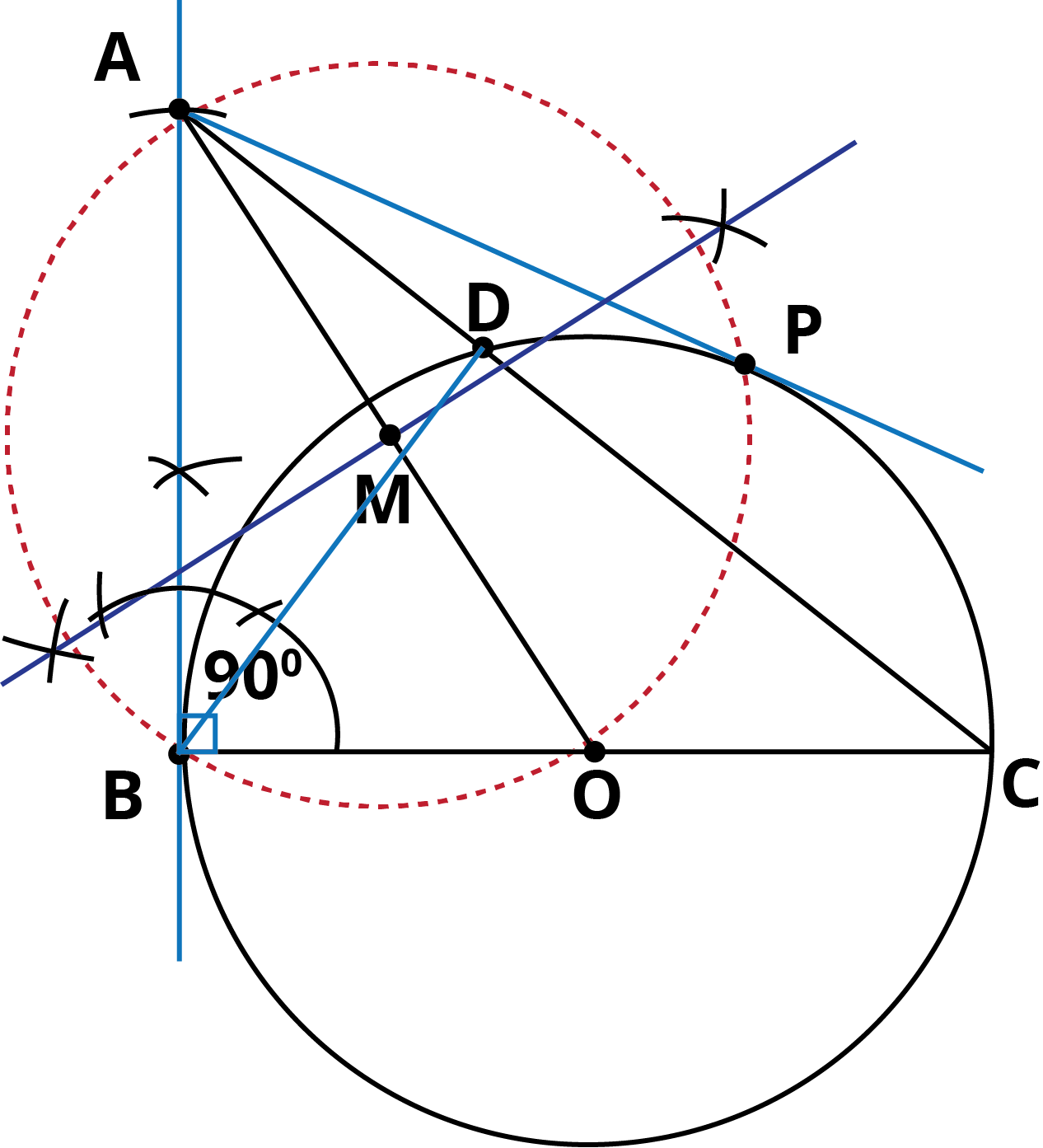
Step of Construction:
(1.) With the given data, take a line BC of 8 cm (BC = 8cm).
(2.) taking O as centre OB as radius, draw a circle.
- Draw an angle of 900 at point B. draw an arc of 6 cm from point B.
- Join AB and AC.
- Join B to D where AC and circle intersect.
- Draw perpendicular bisector of OA. This perpendicular bisector meets OA at M.
- Taking M as centre and MA as radius, draw a circle which intersects the circle at P and B.
- Join AP and AB. These are the required tangents from A.
Justification:
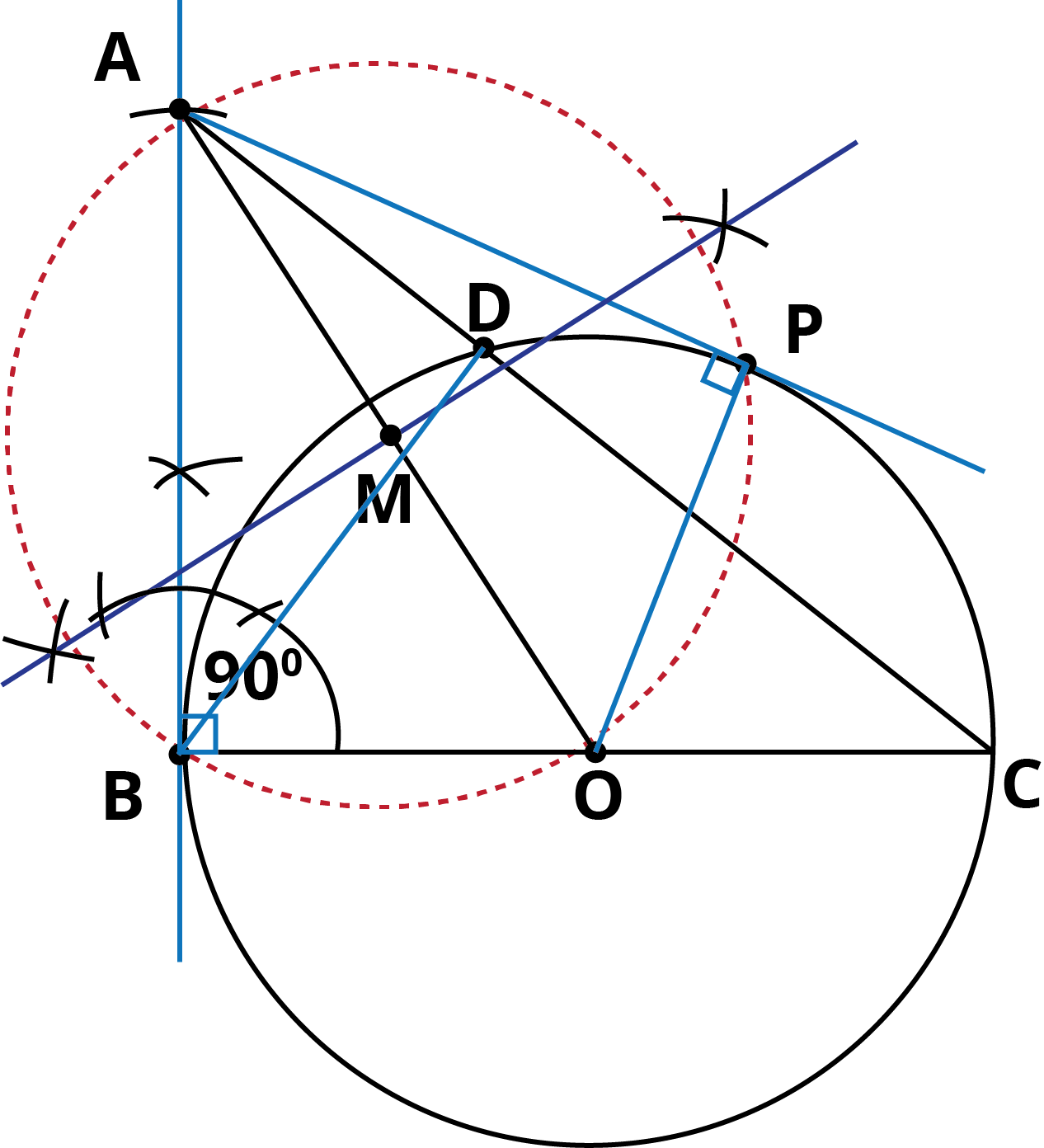
To prove: AB and AP are tangents.
On joining PO, we find that,
∠APO = 90°, [Angle in the semi-circle]
∴ PO ⊥ AP
Since OP is the radius of the given circle, so AP must be a tangent to the circle.
Similarly, AB is the tangent.
Q.7. Draw a circle with the help of a bangle. Take a point outside the circle. Construct the pair of tangents from this point to the circle.
Ans:
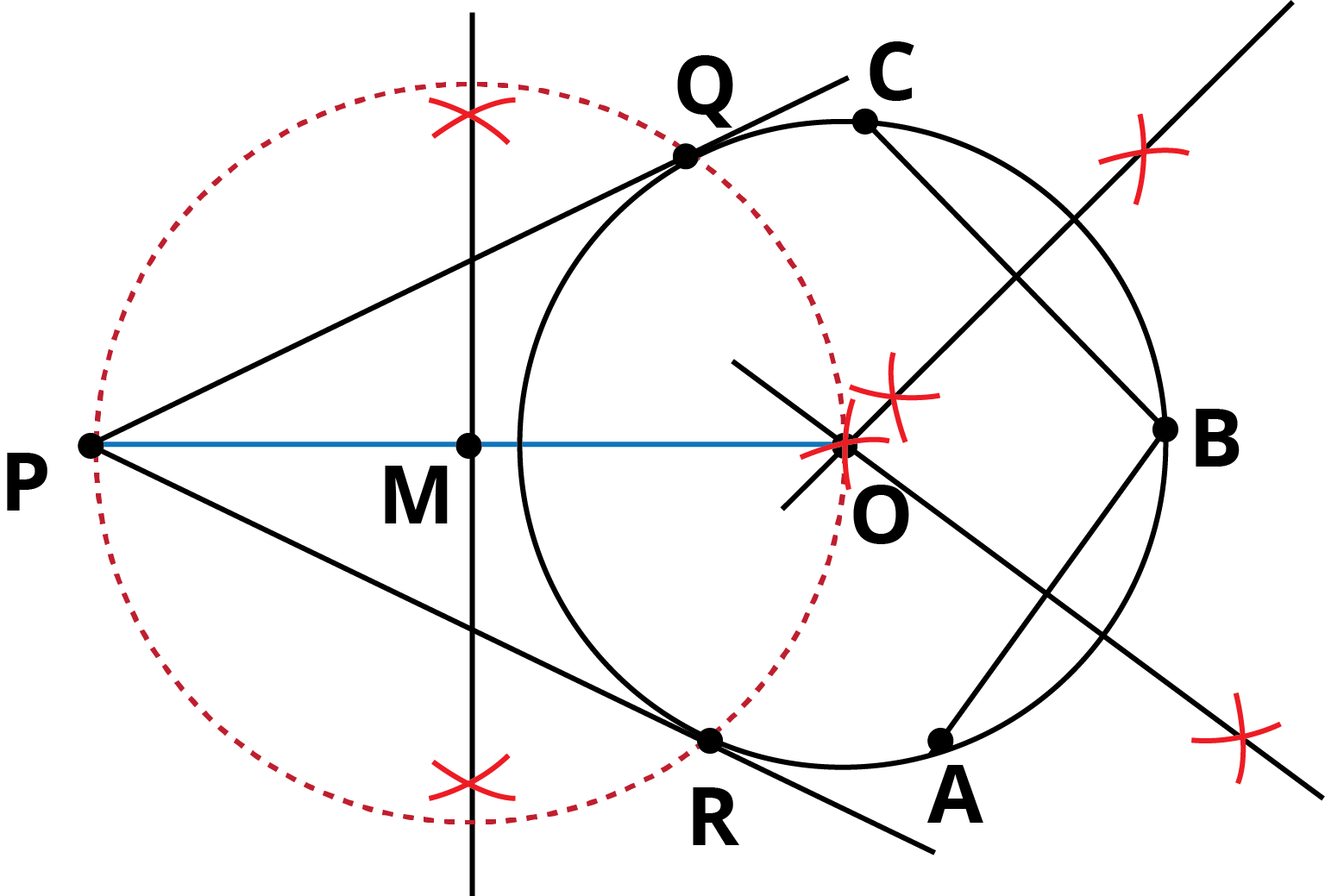
Steps of Construction:
- Draw a circle with the help of a bangle.
- Draw two secant or chord AB and BC on the circle.
- Draw a bisector of AB and BC, which meets at point O consider as centre of circle.
- Take point P outside the circle. Join OP.
- Bisect OP line by making arc and this way we get out bisector at point M.
- Take MP as radius and M as a centre, draw a circle which intersects the circle at Q and R. Then, PQ and PR are the required tangent lines.
Justification:

To prove: PQ and PR are tangents.
On joining QO, we find that,
∠OQP = 90°, [Angle in the semi-circle]
∴ PQ ⊥ OQ
Since OQ is the radius of the given circle, so PQ must be a tangent to the circle.Similarly, PR is the tangent.

